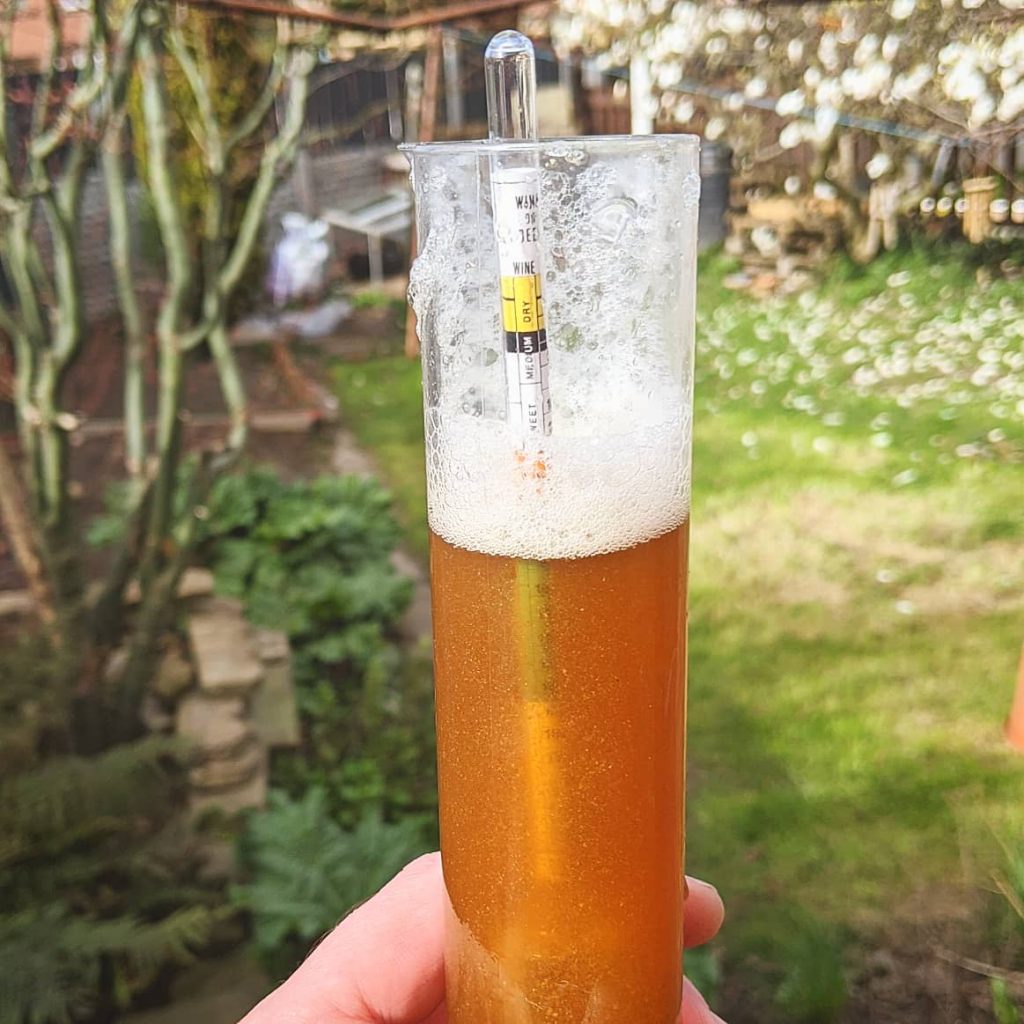I always find that if you are going to brew a home-brew beer – you’re better producing something that’s hard to find by commercial brewers.
This Nettle Top and Dandelion Flower recipe uses freshly foraged spring ingredients. Dry Hopping (Adding dry hops to the fermentor) and added lactose makes for an aromatic, bitter and hazy “Joose” of a beer
Specification: ABV ~6% | Colour: Amber | IBU: 84
This all-grain recipe is for 10 Litres
Ingredients
Malt Bill:
- Crushed Maris Otter Malt 500g
- Crushed Vienna Malt 500g
- Crushed Munich Malt 500g
- Crushed Cara Malt 300g
- Crushed Crystal Malt 200g
- Flaked Oats 200g
Adjuncts:
- Washed Nettle tops 300g
- Washed Dandelion Flowers 100g
- Honey 200g
- Maple Syrup 100g
- Milk Sugar (Lactose) 250g
Hops:
- Amarillo 100g
Yeast:
- Mangrove Jack – New World Strong Ale Yeast M42
Equipment:
- Mash Tun (I use a converted camping cool box with a meshed draining pipe fitted)
- 15l Boiling Pan
- Hopper or fine mesh sack for adjuncts
- Fermentation vessel with lid and airlock
- Thermometer
- Sanitizer
- PH Strips for testing starch to sugar conversion
- Copper cooler/chiller (or cold water from a running tap)
- Hydrometer (to check gravity before and after fermentation)
Method
Firstly sanitise and rinse all the equipment you will be using. Brewing requires everything to be super clean. Bacteria can cause your beer to get infected and go off.
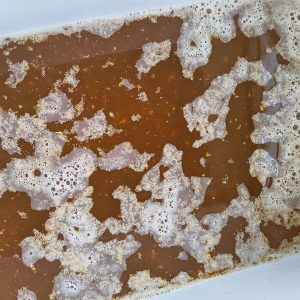 Add 11 Litres of water to your boiling pan, once up to 65°C add the water (now Liquor) to the Mash tun, pour in your grains, mixing/stirring to stop any dough balls forming, add the flaked oats last and stop stirring (they have a tendency to turn to porridge if agitated too much) so not to block the draining pipe when mashing has finished.
Add 11 Litres of water to your boiling pan, once up to 65°C add the water (now Liquor) to the Mash tun, pour in your grains, mixing/stirring to stop any dough balls forming, add the flaked oats last and stop stirring (they have a tendency to turn to porridge if agitated too much) so not to block the draining pipe when mashing has finished.
Once all your grains are added to the mash tun, close the lid and set a timer for 1 hour. After an hour you can check the starches have converted to sugars.
Once converted drain the wort into the brew kettle (your boiling pan).
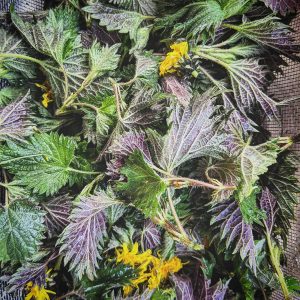 Put the pan on the stovetop on a medium-high heat. Once at boiling (100°C) set a timer and adjust the heat until you have a nice rolling boil. As soon as you get to the boiling point add the mesh sack with Nettles and Dandelion Flowers. When you get to 30mins in add 25g of the Amarillo hops to the sack or your hopper along with the Honey and Maple Syrup in the boil giving a stir. At 50mins in (10 minutes to go) add another 25g of Amarillo to the hopper (for aroma).
Put the pan on the stovetop on a medium-high heat. Once at boiling (100°C) set a timer and adjust the heat until you have a nice rolling boil. As soon as you get to the boiling point add the mesh sack with Nettles and Dandelion Flowers. When you get to 30mins in add 25g of the Amarillo hops to the sack or your hopper along with the Honey and Maple Syrup in the boil giving a stir. At 50mins in (10 minutes to go) add another 25g of Amarillo to the hopper (for aroma).
After an hour has passed, remove the mesh sack and hopper and add the Milk Sugar (lactose), stir until dissolved. When the milk sugars have fully dissolved cool your wort as quickly as possible down to 21°C. Once cool you can check the gravity of the beer.
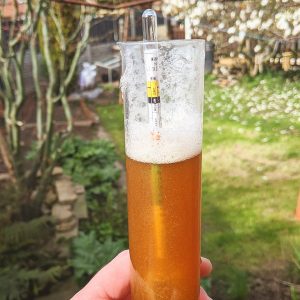 For this recipe Original Gravity (OG) should be around 1.055 – but this can depend on how much of the starch has converted to sugar from your grains.
For this recipe Original Gravity (OG) should be around 1.055 – but this can depend on how much of the starch has converted to sugar from your grains.
Now you have your OG you can then empty/drain the wort into your fermentation vessel and pitch the yeast. Add the lid and airlock and keep between 16-22°C.
The day after brewing fermentation should have started, add 25g of Amarillo Hops (Either in a sterilised mesh bag or straight to the fermentor if you are going to syphon into bottles after fermentation).
Add another 25g of Amarillo Hops on the third day. Fermentation will likely have slowed.
Once fermentation stops (keep checking the gravity with hydrometer to see when it stops) rack/syphon off into bottles with half a tsp of sugar for each bottle to aid carbonation
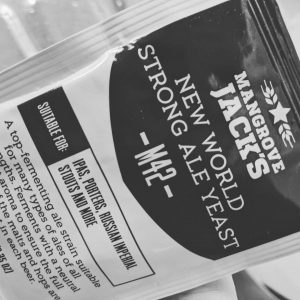 With this particular yeast it should stop roughly at around 1.010 making the beer around 5.9% ABV – Again this can change depending on your final gravity reading, If the yeast is happy it’ll use more sugar increasing the alcohol volume whilst making the brew drier.
With this particular yeast it should stop roughly at around 1.010 making the beer around 5.9% ABV – Again this can change depending on your final gravity reading, If the yeast is happy it’ll use more sugar increasing the alcohol volume whilst making the brew drier.
If you really wanted to you could use finings to clear the beer, but you’d have wasted all your time adding the dry hops for aroma. This beer is designed to be hazy, un-fined and un-filtered.
Lid your bottles and store for a week (upright in a dark place at room temperature) until carbonated.
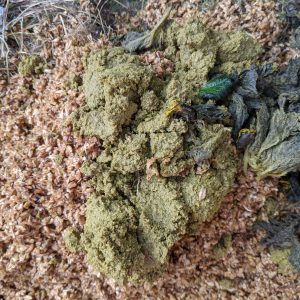 Don’t forget to add your spent grain, hops, nettles and dandelions to your compost heap! It makes the best loamy compost.
Don’t forget to add your spent grain, hops, nettles and dandelions to your compost heap! It makes the best loamy compost.
Cheers! Enjoy the hazy, nettly, hoppy goodness of your finished IPA after all your hard work!

